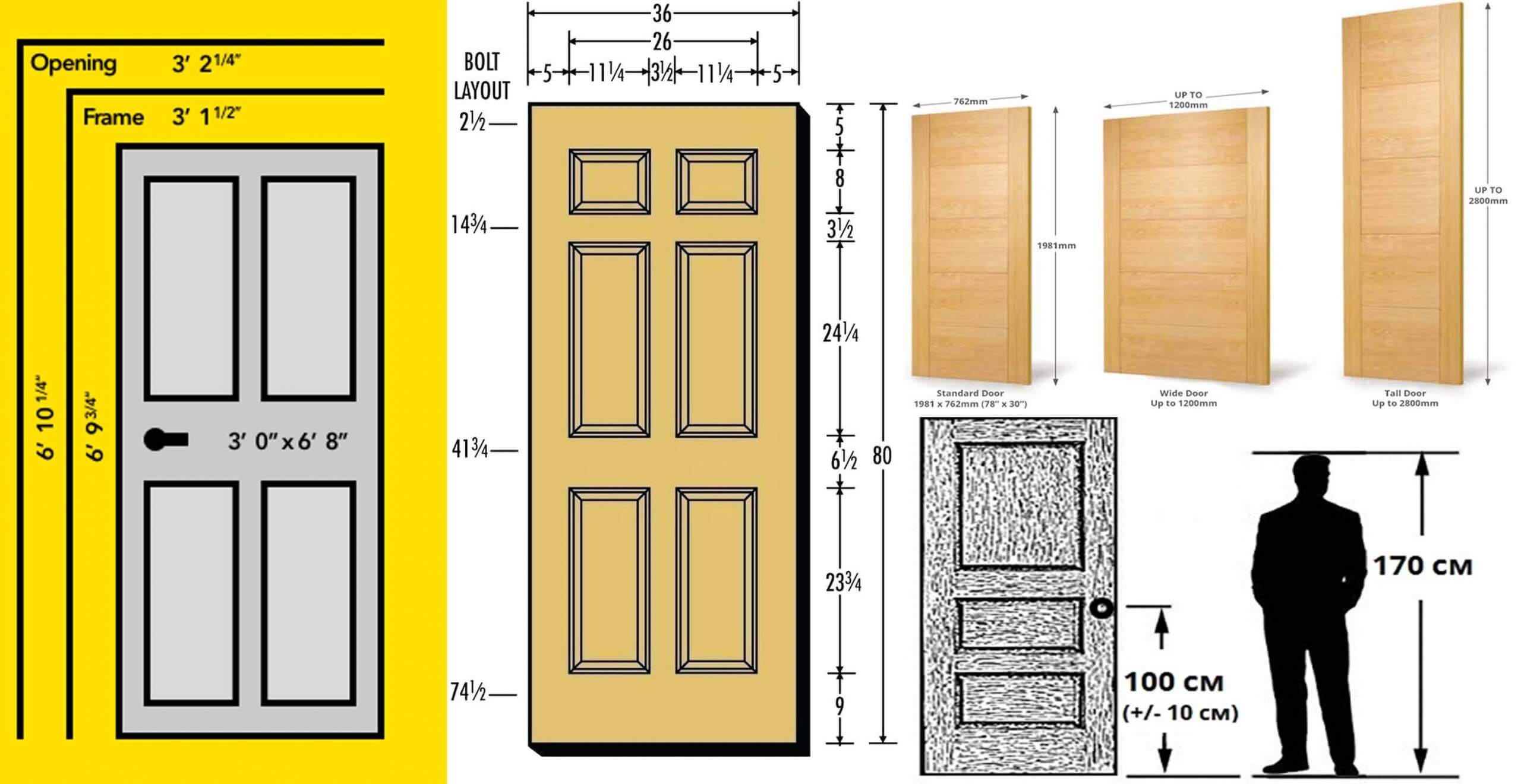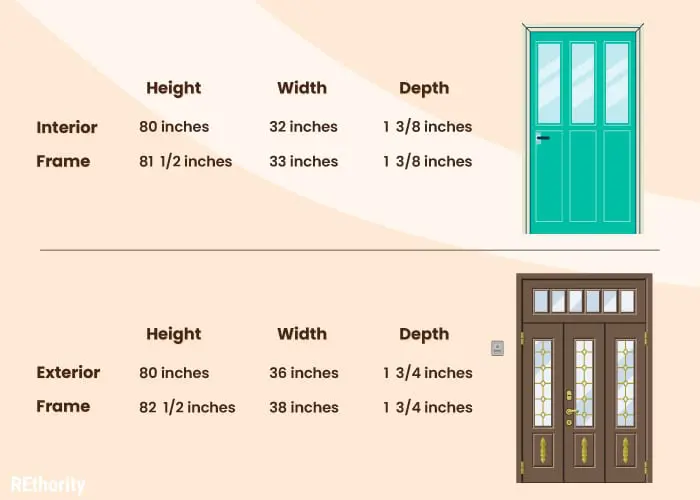Standard Bathroom Door Sizes

Bathroom doors are essential components of any home, providing privacy and functionality. Understanding the standard sizes of these doors is crucial for both homeowners and contractors, ensuring a seamless installation and optimal use of space.
Standard Bathroom Door Sizes in Different Regions
Standard bathroom door sizes vary across different regions and countries due to factors like building codes, accessibility requirements, and design trends. For instance, in the United States, a standard bathroom door is typically 32 inches wide and 80 inches tall, while in Europe, a common size is 80 cm wide and 200 cm tall.
Common Bathroom Door Sizes
Here’s a table showcasing common bathroom door sizes, including single and double doors, along with their respective dimensions:
| Door Type | Width | Height |
|—|—|—|
| Single Door | 32 inches | 80 inches |
| Single Door | 36 inches | 80 inches |
| Double Door | 60 inches | 80 inches |
| Double Door | 72 inches | 80 inches |
Factors Influencing Standard Bathroom Door Size
Several factors influence the standard bathroom door size, including:
* Accessibility Requirements: Building codes often mandate minimum door widths to accommodate people with disabilities, ensuring accessibility and ease of movement.
* Building Codes: Local building codes specify minimum door dimensions to ensure structural integrity and safety.
* Design Trends: Contemporary design trends may favor larger doors for a more spacious feel or narrower doors for a more minimalist aesthetic.
Choosing the Right Bathroom Door Size

The size of your bathroom door is a crucial aspect of its functionality and aesthetics. Selecting the right size depends on several factors, including the size of the bathroom itself, the placement of fixtures, and your personal preferences.
Bathroom Size and Door Size
The size of your bathroom should be the primary factor in determining the appropriate door size. A smaller bathroom may benefit from a narrower door to maximize space, while a larger bathroom can accommodate a wider door for a more spacious feel.
Fixture Placement and Door Swing
The placement of fixtures within the bathroom can also influence the ideal door size. For example, if the toilet is positioned close to the door, a wider door may be necessary to allow for easy access. Additionally, the direction the door swings can impact the available space and the ease of movement within the bathroom.
Accessibility Considerations, Standard bathroom door size
Wider doors are often preferred for wheelchair accessibility, ensuring easy entry and exit. The Americans with Disabilities Act (ADA) recommends a minimum door width of 32 inches for wheelchair accessibility.
Door Size and Bathroom Design
The size of the bathroom door can significantly impact the overall design and functionality of the space. A wider door can create a more welcoming and spacious feel, while a narrower door can make the bathroom feel more intimate. The door size can also influence the placement of furniture and the flow of traffic within the bathroom.
Installing a Bathroom Door: Standard Bathroom Door Size

Installing a bathroom door can be a DIY project if you’re comfortable with basic carpentry skills. You’ll need the right tools and materials, and a little patience, but it’s a satisfying project that can give your bathroom a fresh look.
Tools and Materials
Before you begin, gather the necessary tools and materials. This includes:
- A new bathroom door
- A door frame (if needed)
- A level
- A tape measure
- A pencil
- A hammer
- A screwdriver
- A drill
- A saw
- Safety glasses
- Work gloves
- Wood screws
- Shims
- Caulk
- Paint (optional)
Types of Bathroom Door Frames
Bathroom door frames come in a variety of materials and styles. The most common types include:
- Wood frames: These are the most traditional type of frame and offer a classic look. They’re also relatively easy to install. Wood frames can be stained or painted to match your bathroom décor.
- Metal frames: Metal frames are durable and resistant to moisture. They’re often used in bathrooms with high humidity. Metal frames can be painted to match your bathroom décor.
- Pre-hung frames: These frames come pre-assembled with the door already hung. This makes installation much easier and faster. Pre-hung frames are available in a variety of materials and styles.
Installing a New Door Frame
If you’re replacing an existing door frame, you’ll need to remove the old frame first. Then, follow these steps to install a new frame:
- Measure the opening: Measure the width and height of the door opening. Make sure to allow for the thickness of the door frame.
- Cut the frame pieces: Cut the frame pieces to size using a saw. Make sure the cuts are precise and square.
- Assemble the frame: Assemble the frame pieces together using wood screws. Make sure the frame is square and level.
- Install the frame: Secure the frame to the wall using screws or nails. Make sure the frame is plumb and level.
Installing a Pre-hung Door
Installing a pre-hung door is much easier than installing a frame and door separately. Here’s how to do it:
- Prepare the opening: Make sure the opening is the correct size for the pre-hung door. You may need to adjust the opening by removing or adding material.
- Position the door: Carefully position the pre-hung door in the opening. Make sure the door is level and plumb.
- Secure the door: Secure the door frame to the wall using screws or nails. Make sure the door is properly secured and won’t move.
Hanging the Door
Once the frame is installed, you can hang the door. Here’s how:
- Install the hinges: Install the hinges on the door and frame. Make sure the hinges are aligned and level.
- Hang the door: Carefully hang the door on the hinges. Make sure the door swings freely and doesn’t rub against the frame.
- Adjust the door: Use shims to adjust the door if it’s not level or plumb. Make sure the door closes smoothly and securely.
Installing the Door Handle and Lock
Once the door is hung, you can install the handle and lock. Follow the manufacturer’s instructions for installation.
Ensuring a Proper Fit and Seal
To prevent drafts and noise, it’s important to ensure a proper fit and seal for the door. Here are some tips:
- Check for gaps: Make sure there are no gaps between the door and the frame. If there are gaps, you can use shims to adjust the door or caulk to seal the gaps.
- Use weatherstripping: Weatherstripping can help to seal the gaps between the door and the frame, preventing drafts and noise.
- Check the door sweep: The door sweep is a piece of rubber or metal that is attached to the bottom of the door. It helps to seal the gap between the door and the floor. Make sure the door sweep is in good condition and properly installed.
Final Touches
Once the door is installed, you can add the finishing touches. This includes painting the door and frame to match your bathroom décor. You can also install a doorstop to prevent the door from slamming against the wall.